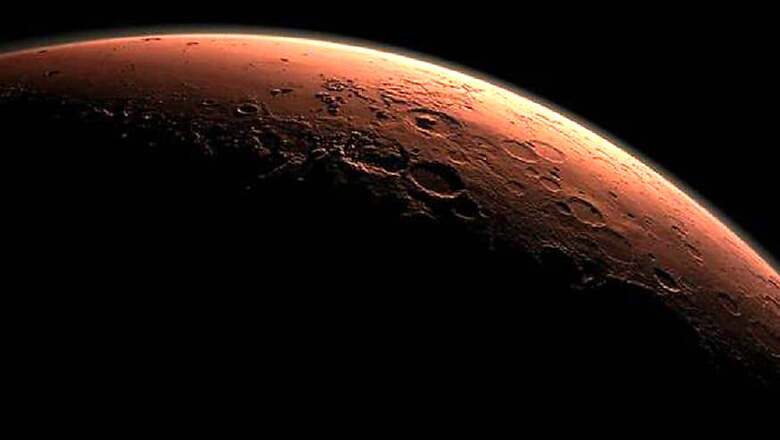
views
The discovery of cracks on the surface of Mars by NASA's Curiosity rover in early 2017 is evidence of lakes that likely dried up 3.5 billion years ago, confirmed a study, revealing details about the red planet's ancient climate. In early 2017 scientists announced the discovery of possible desiccation cracks in Gale Crater, which was filled by lakes 3.5 billion years ago. "We are now confident that these are mudcracks," said lead author Nathaniel Stein, a geologist at the California Institute of Technology in Pasadena, US.
Also Read: Facebook Says it is Taking Down More Material About ISIS, al-Qaeda
Since desiccation mudcracks form only where wet sediment is exposed to air, their position closer to the centre of the lake bed rather than the edge also suggests that lake levels rose and fell dramatically over time. "The mudcracks show that the lakes in Gale Crater had gone through the same type of cycles that we see on Earth," Stein added. Although scientists have known almost since the moment Curiosity landed in 2012 that Gale Crater once contained lakes, "the mudcracks are exciting because they add context to our understanding of this ancient lacustrine system", Stein explained, in the paper published in the journal Geology.
Also Read: Apple is Replacing MacBook Pro Batteries Free of Charge
"We are capturing a moment in time. This research is just a chapter in a story that Curiosa ity has been building since the beginning of its mission," he said. For the study, the team focused on a coffee table-sized slab of rock nicknamed "Old Soaker". Old Soaker is crisscrossed with polygons identical in appearance to desiccation features on Earth.
They found that the polygons -- confined to a single layer of rock and with sediment filling the cracks between them -- formed from exposure to air, rather than other mechanisms such as thermal or hydraulic fracturing, the researchers said.
Also Watch: Tech and Auto Show | Ep 37 | Hyundai Elite i20, Virat Kohli, Google Pixel 2 & More




















Comments
0 comment